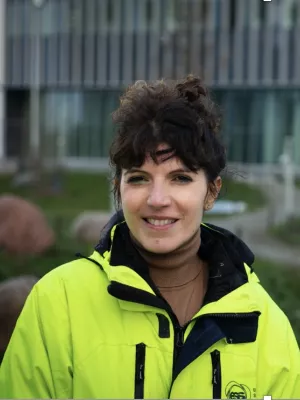
Valentina Santoro
Senior lecturer

Polarisation Development at the European Spallation Source
Author
Summary, in English
To meet the ever-increasing user demand, eleven of the fifteen European Spallation Source (ESS) instruments under construction aim to offer polarised neutrons for user experiments. They include an imaging instrument, a SANS instruments, two reflectometers, three diffractometers, and four spectrometers. In conjunction with in-kind contributions and instrumentation grants, the ESS Polarisation Project will support the incorporation of polarisation analysis on eight of the eleven instruments. The project aims to deliver polarised neutrons for first-science experiments as instruments enter operation. Different polariser and polarisation analyser techniques will be available to accommodate the specifics of experiments on a given instrument. Polarised 3He neutron spin filter using either Metastable Optical Pumping (MEOP) or Spin-Exchange Optical Pumping (SEOP) techniques will provide shared-use equipment among many instruments, with SEOP’s main application being in situ beam-polarisation. Several instruments will also use polarising-supermirror devices. To provide wide-bandwidth spin-flipping capability to the time-of-flight instruments, Adiabatic Fast Passage (AFP) neutron spin flippers, also known as gradient-field radiofrequency spin flippers will be the main method of choice. Devices based on the same AFP principle will also be used to flip 3He nuclear spins. We are constructing our first 3He polariser setup, including field coils to produce highly uniform magnetic field. Monte Carlo simulations are being done for the supermirror polarisers. To ensure science-focused development, we are working with university partners in doing scientific experiments with polarised neutrons. These are some of the activities developing polarisation analysis for ESS instruments in our project.
Department/s
- Physical Chemistry
- LTH Profile Area: Nanoscience and Semiconductor Technology
- LU Profile Area: Light and Materials
- LTH Profile Area: Photon Science and Technology
- Synchrotron Radiation Research
- Mechanics, Materials and Component Design
- Materials Engineering
- NanoLund: Centre for Nanoscience
- European Spallation Source ESS AB
- LTH Profile Area: Engineering Health
- LTH Profile Area: Circular Building Sector
Publishing year
2023-10-01
Language
English
Pages
03004-03004
Publication/Series
EPJ Web of Conferences
Volume
286
Document type
Journal article
Publisher
EDP Sciences
Topic
- Condensed Matter Physics
Status
Published
Project
- Neutron Polarisation Capability Development for User Experiment Applications on ESS Instruments
- Polarisation for first science and beyond at the ESS
- Wide-angle neutron polarisation analysis to study energy and quantum materials
ISBN/ISSN/Other
- ISSN: 2100-014X

